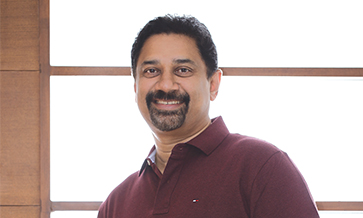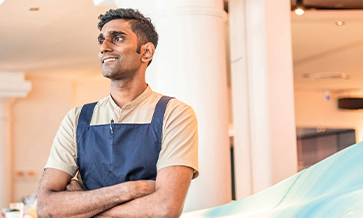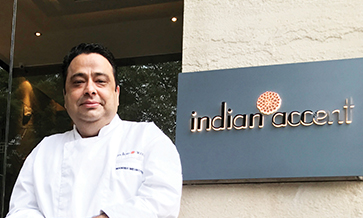A relatively new entrant to the craft beer sector, Kimaya Himalayan Beverages has an interesting portfolio of products and an enviable growth record. Abhinav Jindal, its CEO and Managing Director, spoke with Dhananjay Sardeshpande about his journey thus far. Excerpts:
What brings you to Bengaluru?
I’m here to study the evolving ecosystem of craft beer in this city. Bengaluru is a massive graveyard of many brands, as much as it is the birthplace of craft beer revolution in India.
It is also interesting to study consumer behaviour here: their notions, experiences and tastes when it comes to speciality, artisanal and craft beers. I’m curious to know how and why they promote or reject each new beer.
After 17 years in the liquor retail and distribution business in North India, what made you go solo? And why did you choose beer?
Around 2004, the Sheila Dixit-led government in Delhi was opening up the alcoholic beverages market: excise rules were relaxed and liquor permits for vends became more accessible.
Those were exciting times in North India in general, and in Delhi in particular. I worked with pioneers and leading brands. That experience taught me the ropes in the industry.
Before launching my own business I was sure that I did not want to play the surrogate mother to another brand. So I opted to go solo.
The space for experimentation and innovation in the spirits sector is limited. Beer, on the other hand, is open hunting season, much more experimental and hence and exciting proposition!
Being a beer enthusiast, I love to try newer variants and styles of beer available in different parts of the world. I soon realised the gap in strong beer segment, which propelled me to create a beer brand.
What were your baby steps like?
I leased an existing brewery in Patiala (Punjab). That saved me the headache of considerable capital expenditure. The focus was on the product. We are blessed with fresh water supply, which is so central to processing beer to get the quality right.
How would you describe your two brands?
The first offering is Bee Young, a fresh, youthful creation that delivers a crisp, clean, punchy drink. I decided to launch India’s first strong craft beer in 500-ml cans and bottles. For a more evolved audience, there is Yavira (Sanskrit word for beer) which honours our tradition of home-grown ferments and brews.
Yavira is a balanced brew: crisp yet creamy, racy yet silky, smooth, daring but not daunting, aromatic and fruity yet malty and hoppy! It is made from Basmati rice grown in Punjab, to give it a great mouthfeel and flavor.
Our hops are imported from upper Bavaria (Germany), the Czech Republic and Slovenia.
What are your immediate plans for expansion?
We are set to launch more variants in the coming months and also working on setting up our own brewery in Uttarakhand. Bee Young and Yavira are widely available in Punjab, Delhi and Uttarakhand, and are now available in Uttar Pradesh too.
The current portfolio is focused on the retail sector, aided by some curated events. The on-trade is a tough nut to crack, and a very expensive proposition. The South Indian market also beckons – it has more mature and discerning consumers, and that excites me!
Bee Young and Yavira have already hit the shelves in Singapore, Hong Kong and West Asia. There were business proposals to introduce them in these markets without my having to sacrifice the brand sanctity. Many more expressions of interest are on the table.
How do you differentiate between craft and commercial beers?
Commercial beer is about standardisation and mass distribution. Craft comes from a deep understanding of the raw materials, the processes, and from an appetite for experimentation and risk.
It emanates from hand-picked grains, adjuncts (barley, wheat, rice and corn), hops and yeasts. It requires a well-curated production process that envisages and achieves the desired results. For Bee Young, it also requires consistency in the final product.
It is said that for the production of good craft beer, one-third weightage can be attributed to the manufacturing equipment, one-third to its ingredients, and another one-third to the Brewmaster, the brain, artist and magician behind the brew. Our Brewmaster is Kumar Gaurav, who trained at VLB Berlin.
What has been the role of state governments in promoting beer?
Beer must be brought under the preferential taxation regime that is currently extended to wine – both are fermented agricultural products, from grains and grapes respectively. The regulatory authorities must also be made aware of this.
Barley was never developed as a cash crop in India. State governments must assist farmers in cultivating the correct varieties of barley and wheat for the captive market in beer-making.
A boost to wine and beer consumption will have several good effects: it will promote healthier drinking among the population, help farmers produce correct crops, and increase government revenues. When illnesses related to alcohol abuse come down, government healthcare expenditure will also reduce. It’s a win-win situation.
What would be your advice to entrepreneurs entering the alcobev sector?
The alcohol beverage as an industry in India has no guardian. States are only concerned about shoring up their revenues. Bringing around progressive changes takes a back seat in such a situation.
Given the federal structure of our country, it requires extensive experience and relationship building across markets. This industry is all about relationships.
Who calls the shots at Kimaya Himalayan?
Happily, it’s not a top-down, one-way method of working! It’s a collaborative effort, with free flow of information and ideas that are discussed and debated before arriving at a decision.
We have our Brewmaster, a finance controller, and heads of operations, business and brand development. We also requisition assistance from experts whenever required. We all travel and taste beers a lot. It’s the experience gained, learning from it, and experimentation that makes us click!














